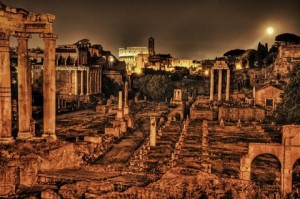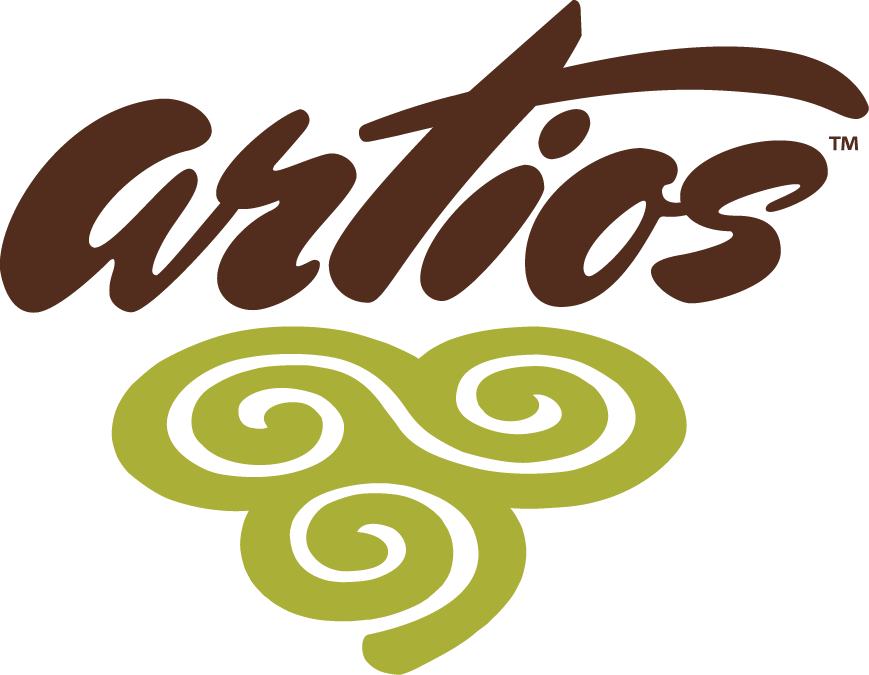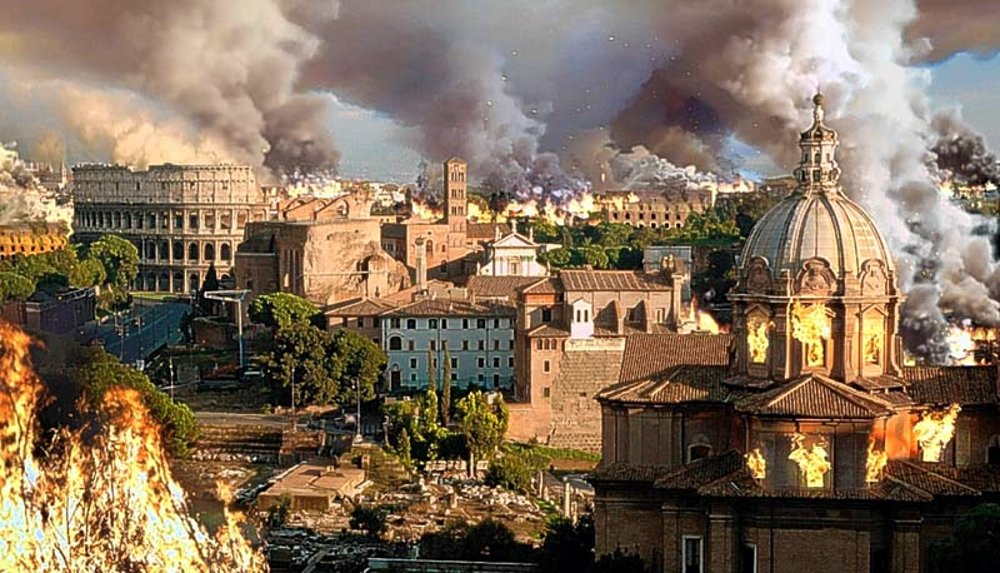[precontent]
[one_third]
Unit 2: The Fall of Rome
[dropcap type=”box”]A[/dropcap]failing economy, barbarian invasions, a military stretched too thin, and corruption were all factors that led to the downfall of Rome. This unit will cover the events and people responsible for this downfall.
[/one_third]
[two_third_last]
[/two_third_last]
[/precontent]
[three_fourth]
[box]
[box_header]
Unit 2 [flag bg_color=”#d6e3bc” text_color=”#9d241a”]Middle School[/flag]
[/box_header]
[box_content]
Unit Overview
- Subjects Covered
- Grammar, Literature, Composition, Social Studies
- Time Period
- Medieval – Renaissance
- Grade Level
- Middle school: 6-8
- Civilization
- Rome, Teutonic
- Literature
- The Confessions of St. Augustine by St. Augustine
[/box_content]
[box_content]
Unit Description

There is a popular saying, “Rome was not built in a day.” The opposite is also true: “Rome did not fall in a day.” The fall of Rome was due to many different circumstances. A failing economy, barbarian invasions, a military stretched too thin, and corruption that ran rampant. These were all contributing factors to the fall of Rome. This unit will cover the invasion of Rome by three different barbarian tribes: the Ostrogoths (East Goths), the Visigoths (West Goths), and the Vandals.
[/box_content]
[box_content]
Leading Ideas and Biblical Principles
[list type=”arrow”]
- An individual’s character will be reflected in his leadership.
As a man thinketh in his heart, so is he. – Proverbs 23:7 - There is power in the spoken word to do evil or to do good.
Out of the abundance of the heart, the mouth speaketh. – Matthew 12:34
[/list]
[/box_content]
[box_content]
Key Events, People, and Topics.
[list type=”arrow”]
- Attila the Hun
- Leo the Great
- Clovis
- Cotilda
- Gaiseric the Goth
- Romulus Augustulus.
- Arius
[/box_content]
[/box]
[box]
[box_header]
Unit 2 Resources: [flag bg_color=”#d6e3bc” text_color=”#9d241a”]Middle School[/flag]
[/box_header]
[box_content]
[button id=”1″ link=”https://www.artioshcs.com/wp-content/uploads/2016/07/Unit-2-History-Middle-School-Medieval-Renaissance.pdf” linking=”new-window” size=”medium” type=”simple” title=”maps”]Download History Unit[/button]
[button id=”1″ link=”https://www.artioshcs.com/wp-content/uploads/2016/07/Literature-Units-1-6-Middle-School-Medieval-Renaissance.pdf” linking=”new-window” size=”medium” type=”simple” title=”maps”]Download Language Arts Unit[/button]
[/box_content]
[box_content]
[tabs type=”simple” position=”top-left”]
Click here. link=”http://ia700409.us.archive.org/8/items/city_of_god_ds_librivox/cityofgod_11a_augustine.mp3″]Download Audio Book[/button]
[button size=”medium” link=”http://www.newadvent.org/fathers/120109.htm”]The City of God[/button]
[tab_title]Resources[/tab_title]
[tab_content]
- The Barbarians Documentary (CAUTION: This video contains violence. Parents are urged to preview this video before students watch)
[/tab_content]
[tab_title]Arts[/tab_title]
[tab_content]
Art:
https://youtu.be/MJmDmCofZek
[/tab_content]
[/tabs]
[/box_content]
[/box]


This is an awesome and humorous video to help us remember the various aspects of society that led to the fall of Rome.
Enjoy!
http://www.history.com/videos/the-fall-of-rome#the-fall-of-rome
Points to Ponder
Why so much narration?
In developing readers and writers, narration plays a key role in the development of both writing skills and comprehensions skill. Narration serves as practice in the chronological recall of key aspects of the reading and in accurately retelling what has been read. It also serves as great writing practice for the student. Often in the student’s narration, you will find them unconsciously mimicking the writing style of the reading, thus gaining practice with varied sentence structure and new vocabulary.
Points to Ponder:
1. As students and parents begin reading the articles contained in the history section, they will notice that the sentence structure and vocabulary is much more varied than that found in a typical textbook. This reading may prove to be challenging for students who are not used to more complex writing and sentence structure. However, as the student continues the reading they will not only find it easier, but their vocabulary will expand and their writing will improve based on the variety of writing styles read throughout the history section.
2. You will notice that not all of the articles chosen are written by the same author. This too, was a conscious decision on the developers of this curriculum. As we all know, the way history is perceived and recorded can vary based on an author’s personal worldview and perspective. In choosing articles by various authors, we are illustrating this fact to the student and challenging them to compare and contrast various aspects of recorded history.